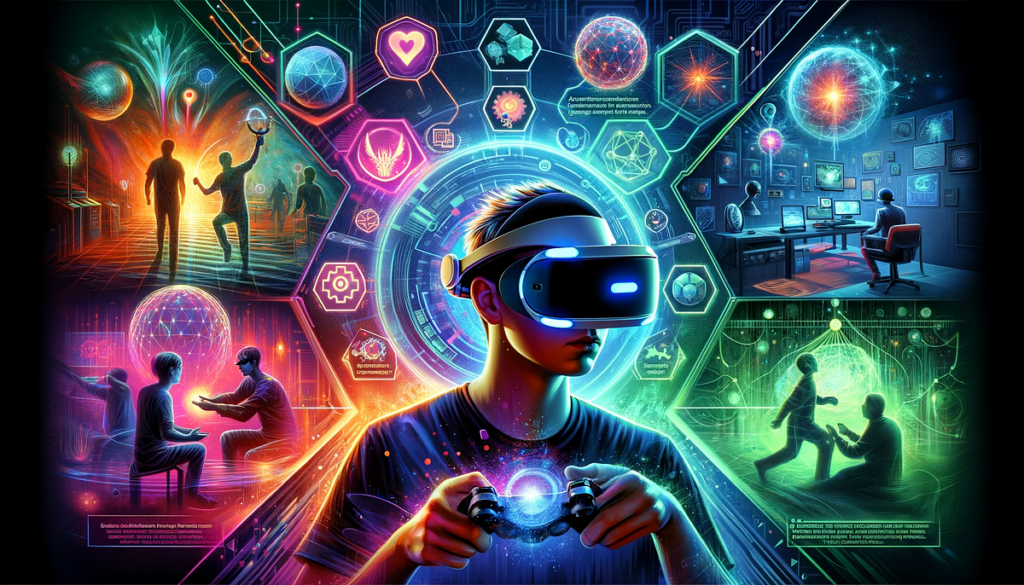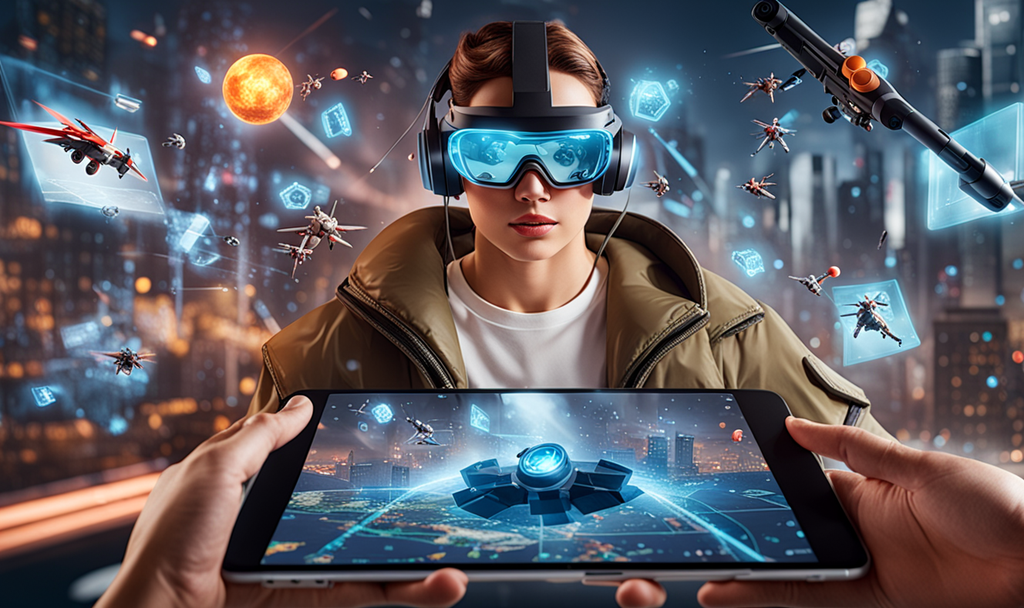As technology continues to evolve, the boundaries of what is possible in the gaming world are constantly expanding. Augmented Reality (AR) and Virtual Reality (VR) are two of the most exciting advancements that are poised to revolutionize the way we play and experience games. This article explores the current state and future potential of AR and VR in mainstream gaming, examining their impact on gameplay, industry trends, and the overall player experience.
The Current State of AR and VR in Gaming
Virtual Reality (VR): VR immerses players in a completely digital environment, allowing them to interact with a game world in a way that traditional screens cannot match. Headsets like the Oculus Rift, HTC Vive, and PlayStation VR have made VR gaming more accessible to consumers. Games like ‘Half-Life: Alyx’ and ‘Beat Saber’ have showcased the potential of VR to deliver deeply immersive and innovative gaming experiences.
Augmented Reality (AR): AR overlays digital information onto the real world, blending virtual elements with physical environments. Popularized by games like ‘Pokémon GO’, AR has demonstrated how mobile devices can turn everyday locations into interactive gaming spaces. The success of ‘Pokémon GO’ highlighted the mass appeal of AR gaming and its ability to engage players in outdoor and social activities.
Read also about: Cloud Gaming: Accessibility and the Future of Game Streaming Services.
The Impact of AR and VR on Gameplay
Immersive Experiences: Both AR and VR offer unprecedented levels of immersion. VR’s ability to transport players to entirely new worlds enhances the sense of presence and engagement. In VR, players can look around and interact with the environment naturally, creating a more intuitive and captivating experience. AR, on the other hand, enhances the real world with interactive elements, making everyday surroundings part of the game.
Innovative Mechanics: AR and VR enable new gameplay mechanics that were not possible with traditional gaming setups. In VR, players can physically move, crouch, and reach out to interact with virtual objects, adding a layer of physicality to gaming. AR games can use real-world locations and objects as part of the gameplay, encouraging exploration and creativity.
Enhanced Social Interaction: AR and VR have the potential to transform social gaming experiences. In VR, multiplayer games can feel more personal and interactive, as players can see and hear each other in a shared virtual space. AR games can facilitate social interactions in the real world, bringing players together in physical locations for cooperative or competitive play.

Industry Trends and Developments
Accessibility and Affordability: One of the key challenges for the widespread adoption of AR and VR has been the cost of the hardware. However, prices are gradually decreasing, and standalone devices like the Oculus Quest 2 are making VR more accessible. AR technology, primarily driven by mobile devices, is already widely available, reducing barriers to entry for new players.
Content Creation and Development: The growth of AR and VR gaming is also driven by the increasing number of developers creating content for these platforms. Game engines like Unity and Unreal Engine provide robust tools for developing AR and VR experiences, making it easier for developers to experiment and innovate. Additionally, major tech companies like Facebook (Meta), Google, and Apple are investing heavily in AR and VR technologies, ensuring continued advancement and support.
Cross-Platform Integration: The future of AR and VR in gaming will likely involve greater integration with existing gaming platforms and ecosystems. Cross-platform play and compatibility with traditional gaming consoles and PCs can enhance the versatility and appeal of AR and VR games. For example, VR games that can be played on both standalone headsets and traditional consoles can reach a wider audience.

The Future Potential of AR and VR in Gaming
Expanding Genres: As AR and VR technologies evolve, we can expect to see a broader range of game genres embracing these platforms. While early VR games often focused on immersive simulations and action experiences, future titles could explore genres like strategy, role-playing, and even educational games in new and innovative ways. AR can similarly expand beyond location-based games to include genres that integrate more seamlessly with daily activities and tasks.
Persistent Virtual Worlds: The concept of persistent virtual worlds, where players can continuously interact with a digital environment that evolves over time, is a promising direction for VR gaming. Imagine a VR MMORPG (Massively Multiplayer Online Role-Playing Game) where players inhabit a shared virtual world that feels alive and dynamic, with ongoing events and changes driven by player actions.
AR and VR in Competitive Gaming: Esports and competitive gaming could also benefit from AR and VR integration. VR esports tournaments, where players compete in immersive virtual arenas, could offer a new level of excitement for both participants and viewers. AR could enhance live events by overlaying game statistics, replays, and interactive elements onto physical venues.

Conclusion
The integration of Augmented Reality (AR) and Virtual Reality (VR) in mainstream gaming is poised to redefine the way we play and experience games. With their ability to create immersive, interactive, and innovative experiences, AR and VR are set to become integral components of the gaming industry. As technology continues to advance and accessibility improves, the potential for AR and VR in gaming will only grow, offering exciting possibilities for players and developers alike. The future of gaming is not just on our screens but all around us, in the virtual and augmented worlds we are just beginning to explore.
